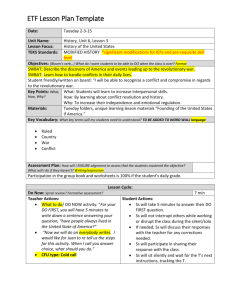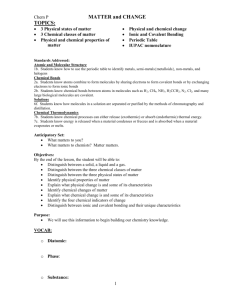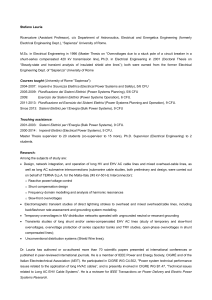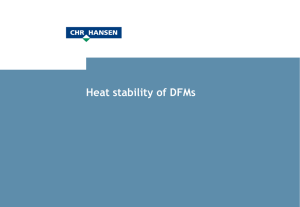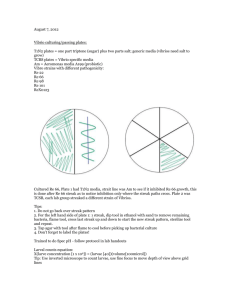People and Art in the Mexican Revolution Duration
advertisement
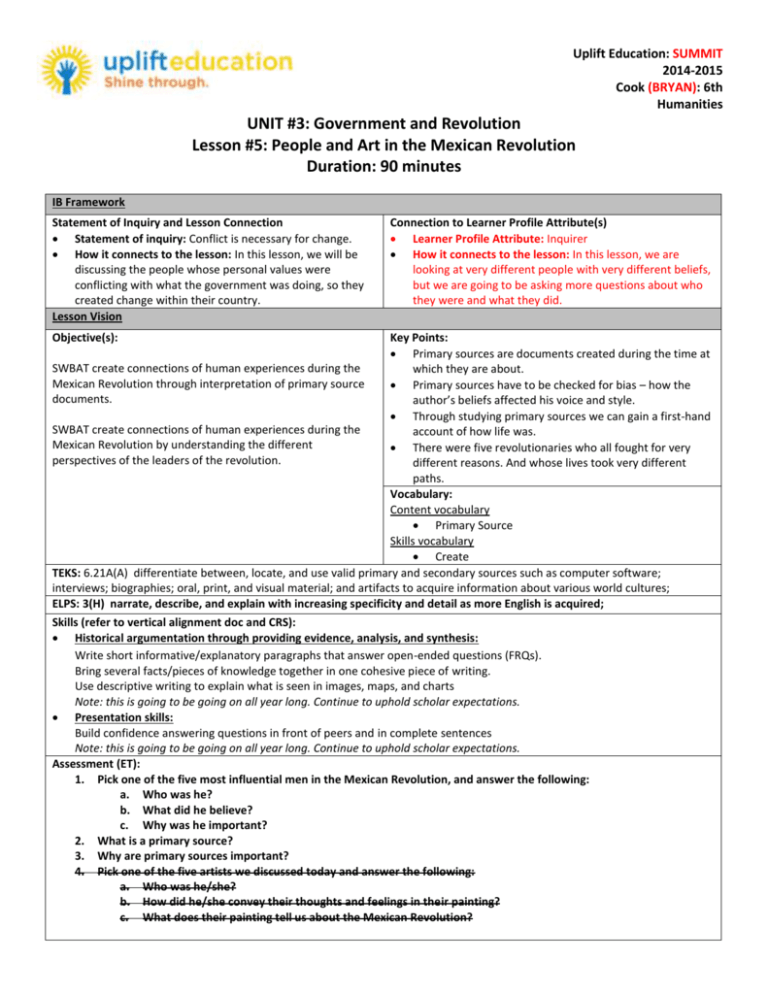
Uplift Education: SUMMIT 2014-2015 Cook (BRYAN): 6th Humanities UNIT #3: Government and Revolution Lesson #5: People and Art in the Mexican Revolution Duration: 90 minutes IB Framework Statement of Inquiry and Lesson Connection Statement of inquiry: Conflict is necessary for change. How it connects to the lesson: In this lesson, we will be discussing the people whose personal values were conflicting with what the government was doing, so they created change within their country. Lesson Vision Objective(s): Connection to Learner Profile Attribute(s) Learner Profile Attribute: Inquirer How it connects to the lesson: In this lesson, we are looking at very different people with very different beliefs, but we are going to be asking more questions about who they were and what they did. Key Points: Primary sources are documents created during the time at SWBAT create connections of human experiences during the which they are about. Mexican Revolution through interpretation of primary source Primary sources have to be checked for bias – how the documents. author’s beliefs affected his voice and style. Through studying primary sources we can gain a first-hand SWBAT create connections of human experiences during the account of how life was. Mexican Revolution by understanding the different There were five revolutionaries who all fought for very perspectives of the leaders of the revolution. different reasons. And whose lives took very different paths. Vocabulary: Content vocabulary Primary Source Skills vocabulary Create TEKS: 6.21A(A) differentiate between, locate, and use valid primary and secondary sources such as computer software; interviews; biographies; oral, print, and visual material; and artifacts to acquire information about various world cultures; ELPS: 3(H) narrate, describe, and explain with increasing specificity and detail as more English is acquired; Skills (refer to vertical alignment doc and CRS): Historical argumentation through providing evidence, analysis, and synthesis: Write short informative/explanatory paragraphs that answer open-ended questions (FRQs). Bring several facts/pieces of knowledge together in one cohesive piece of writing. Use descriptive writing to explain what is seen in images, maps, and charts Note: this is going to be going on all year long. Continue to uphold scholar expectations. Presentation skills: Build confidence answering questions in front of peers and in complete sentences Note: this is going to be going on all year long. Continue to uphold scholar expectations. Assessment (ET): 1. Pick one of the five most influential men in the Mexican Revolution, and answer the following: a. Who was he? b. What did he believe? c. Why was he important? 2. What is a primary source? 3. Why are primary sources important? 4. Pick one of the five artists we discussed today and answer the following: a. Who was he/she? b. How did he/she convey their thoughts and feelings in their painting? c. What does their painting tell us about the Mexican Revolution? Accommodations/Modifications for Special Populations: Preferential Seating, Guided notes, Pull outs, Tutoring, Partner/Paired work, Extension activities, Review activities Materials Needed: Lifework, Writing Utensil, Packet, computer, projector Teaching Plan Do Now Time: 5 min. ON THE FRONT PAGES OF THE GUIDED NOTES, take the “quiz.” There are not RIGHT or WRONG answers, so answer the questions as honestly as you can. Hook Time: 2 min. Who would you have been in the Mexican Revolution? Today we want to take a look at what we know about these leaders, and then we want to dig a little deeper to know them better. Intro to New Material #1 (I Do) Time: 3 min. After you completes the quiz on the front of the guided notes 1. Circle your answer for each question in the box below the quiz. 2. Count the number of circled responses below each Revolutionary leader. 3. Which revolutionary leader are you most like? CFU: How will you be able to tell who your person is? Guided Practice #1(We Do) Time: 20 min. Checks for Understanding and Exemplar Student Responses CFU: How will you be able to tell who your person is? I will be able to tell who I match with because my score points will match up with the scores for my person. Potential Misconceptions: Influential people are not always good. Art painted about historical events during that time period are primary sources, even though they aren’t text. Put scholars in five different groups, based on who their Mexican Revolution character is. In their groups: Put together bulleted points of information based on what you learned about each leader in the quiz. Write a three (3) sentence summary of the leader that was the focus of your group. Then, have scholars share out their bios and summaries, so that all scholars can meet the “main characters” of the Mexican Revolution. Intro to New Material #2 (I Do) Time: 10 min. CFU: What will you be working on in your groups? CFU: What was [name] all about? Note: this will be to individual groups, and answered in their summaries. Checks for Understanding and Exemplar Student Responses: CFU: What will you be working on in your groups? We are going to create a bio page for our Mexican Revolution character that has the information in the quiz and a summary of what they were all about. CFU: What was [name] all about? Note: this will be to individual groups, and answered in their summaries. Potential Misconceptions: Influential people are not always good. Art painted about historical events during that time period are primary sources, even though they aren’t text. Scholars take notes over the following: Primary sources are original materials created at the time of the event that have not been altered or distorted in any way. o ORIGINAL DOCUMENTS: Diaries, speeches, manuscripts, letters, interviews, news film footage, autobiographies, official records o CREATIVE WORKS: Poetry, drama, novels, music, art o RELICS OR ARTIFACTS: Pottery, furniture, clothing, buildings Primary sources have to be checked for bias – how the author’s beliefs affected his voice and style. Through studying primary sources we can gain a first-hand account of how life was. A secondary source interprets and analyzes primary sources. These sources are one or more steps removed from the event. Some types of secondary sources include: textbooks, magazine articles, histories, criticisms, commentaries, encyclopedias, etc. Secondary sources also have to be checked for bias – how the author’s (editor’s) beliefs affected his voice and style. Teacher will lead a short discussion around the following questions: What is the purpose of art? What are the different types of art? What are the words that you can think of to describe art? Why does art count as a primary source? Now, we are going to look at five men and women who expressed themselves through art about the Mexican Revolution, so we can see how different people felt at the time. CFU: So, what are primary sources? CFU: What are some examples of primary sources? CFU: So, what are secondary sources? CFU: What are some examples of secondary sources? Guided Practice #2 (We Do) Time: 20 min CFU: Why does art count as a primary source? Checks for Understanding and Exemplar Student Responses CFU: So, what are primary sources? Primary sources are items that are created during the time period that they are about. CFU: What are some examples of primary sources? Some examples of primary sources include diaries, manuscripts, news film footage, autobiographies, official records, novels, music, pottery, furniture, clothing, letters, art, photographs, etc. CFU: Why does art count as a primary source? Art counts as a primary source because it tells stories about the time period that it is created in. Potential Misconceptions: Influential people are not always good. Art painted about historical events during that time period are primary sources, even though they aren’t text. Split scholars into five groups. Each group will be assigned an artist to do research on and fill out the bio information for that artist. The groups are: 1. Diego Rivera 2. Jose Clemente Orozco 3. Jose Guadalupe Posada 4. David Alfaro Siquieros 5. Frida Kahlo For the Mexican Revolutionary Leader who is the focus of your group, I want you to research additional details of their life and their accomplishments. 1. You may use your technology – phone, tablet, etc. 2. Note the source of your information – where it came from. a. Is this a reliable resource? b. Does the author have a bias, or an obvious point of view? c. Is this information verified by another source? 3. Each group should come up with 3-4 additional bullet points of information, verified, and the sources of that information. When scholars have finished their bios, they will teach the information to their classmates. CFU: What are you going to work on in your groups? CFU: How are you going to make sure that you stay on task and finish your work? Checks for Understanding and Exemplar Student Responses: CFU: What are you going to work on in your groups? We are going to create a bio for our artists as a group, and then teach about our artist to the class. Independent Practice (You Do) Time: 20 min. CFU: How are you going to make sure that you stay on task and finish your work? Answers will vary by scholar. Potential Misconceptions: Influential people are not always good. Art painted about historical events during that time period are primary sources, even though they aren’t text. Scholars will silently work on a RAFT writing assignment: Role – your character in the Mexican Revolution Audience – the other characters that played a major role in the revolution Format – letter Task – write a letter to the other influential people in Mexico to convince them to join a revolution against Spain Note: A possible extension for scholars who finish early is to have them grade their RAFT using the TOP rubric. Closure and Exit Ticket Time: 10 min. CFU: What will you be doing? CFU: What will your writing look like? Checks for Understanding and Exemplar Student Responses: CFU: What will you be doing? We will be writing a letter from our own character in the MR to another character to ask them to join me in the revolt against Spain. CFU: What will your writing look like? My writing will look neat, will have complete sentences, and will be complete. Potential Misconceptions: Influential people are not always good. Art painted about historical events during that time period are primary sources, even though they aren’t text. Closure: What is a PRIMARY SOURCE and how is it different from a SECONDARY SOURCE? Exit Ticket: 1. Pick one of the five most influential men in the Mexican Revolution, and answer the following: a. Who was he? b. What did he believe? c. Why was he important? 2. What is a primary source? 3. Why are primary sources important? 4. Pick one of the five artists we discussed today and answer the following: a. Who was he/she? b. How did he/she convey their thoughts and feelings in their painting? c. What does their painting tell us about the Mexican Revolution? Homework/Extension Varies depending on campus requirements.

